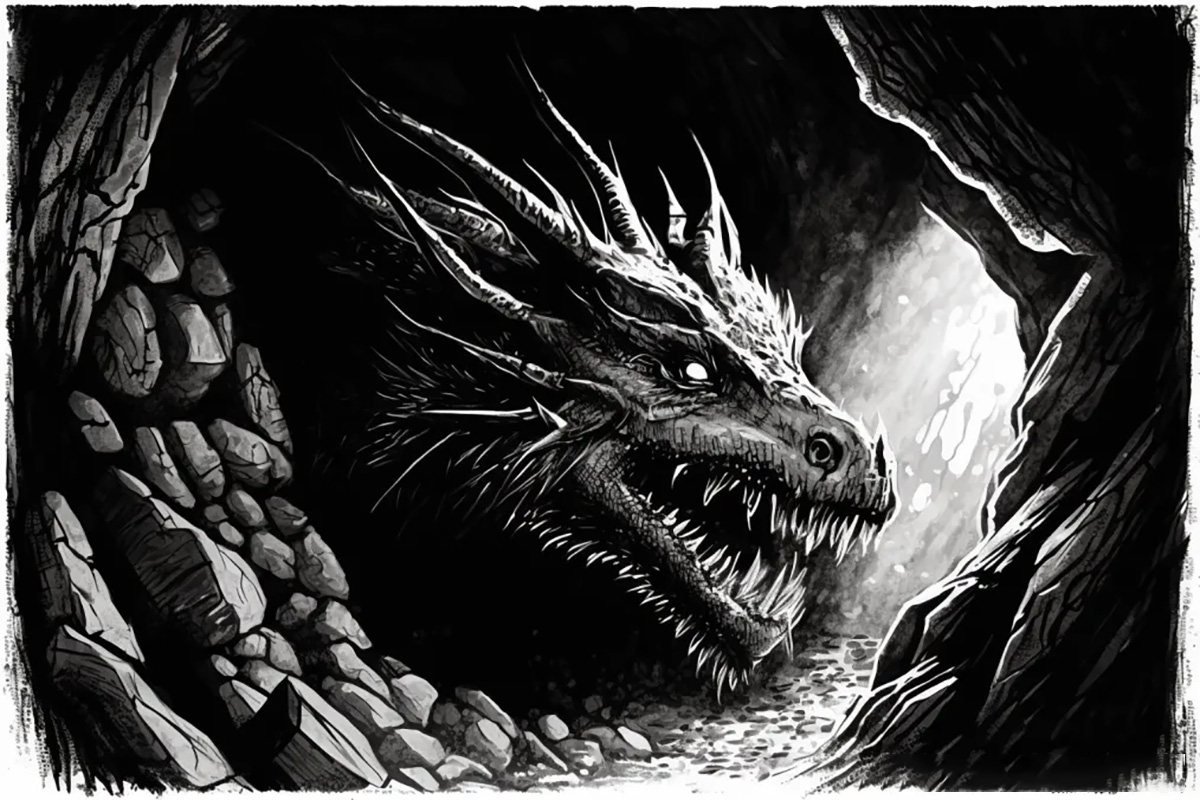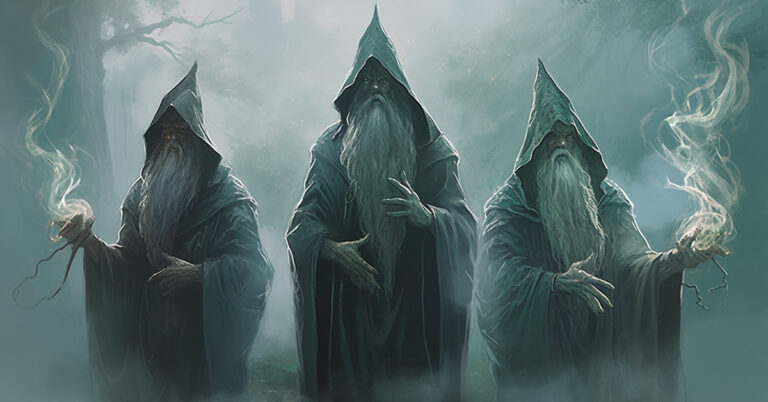Mirror Image is a 2nd-level illusion spell that allows the caster to create illusory duplicates of themselves. These duplicates serve as a defensive mechanism, making it harder for enemies to target the caster in combat. The tactical advantages that Mirror Image grants make it a popular choice among spellcasters seeking to enhance their survivability in battle.
In a rush? Check out our quick overview of Mirror Image in our web story.
Table of Contents
What does Mirror Image do?
Mirror Image is primarily a defensive spell that provides the caster with a means to avoid damage and confound enemies. When cast, the spell creates multiple illusory duplicates of the caster that move and mimic their actions, making it difficult for foes to discern the real caster from the illusions. These duplicates serve as a layer of protection, absorbing attacks that would otherwise hit the caster.
Each time an enemy targets the caster with an attack, there is a chance the attack will instead target one of the duplicates. Although the duplicates have a low Armor Class (AC) and are destroyed when hit, the caster can still avoid a significant amount of damage throughout the spell’s duration.
How does Mirror Image work?
Spell components and casting time
Mirror Image requires verbal and somatic components and has a casting time of one action. This means the caster must be able to speak and move their hands to cast the spell. It does not require any material components, making it easier to cast in situations where materials might be scarce or unavailable.
Creating illusory duplicates
Upon casting Mirror Image, the spell creates three illusory duplicates of the caster in their immediate vicinity. These duplicates occupy the same space as the caster and move with them, mimicking their actions to make it difficult for enemies to determine which image is real. The duplicates have an AC equal to 10 + the caster’s Dexterity modifier and possess one hit point each. They are immune to all damage except for the specific attack that destroys them.
Mechanics of attacks against the caster
When an enemy targets the caster with an attack during the spell’s duration, the DM must determine if the attack targets a duplicate or the caster. The DM or player rolls a d20 to decide the outcome, with higher rolls indicating that the attack targets a duplicate.
What must you roll to hit a player casting Mirror Image?
- If there are three duplicates: A roll of 1-5 will hit the caster, a roll of 6 or higher will hit a duplicate
- If there are two duplicates: A roll of 1-7 will hit the caster, a roll of 8 or higher will hit a duplicate
- If there is one duplicate: A roll of 1-10 will hit the caster, a roll of 11 or higher will hit a duplicate
The threshold for targeting a duplicate decreases as the number of duplicates remaining decreases. If an attack hits a duplicate, it is destroyed. If all duplicates are destroyed or the attack roll is too low to target a duplicate, the attack targets the caster as normal.
Which creatures at not affected by Mirror Image spell?
Any creature that can’t see, or relies on senses other than sight, such as blindsight, or if it can perceive illusions as false, as with truesight, are unaffected by the Mirror Image spell.
Duration of Mirror Image
Mirror Image has a duration of one minute (10 turns), making it effective for most combat encounters. Once all duplicates have been destroyed or the spell’s duration ends, the spell ceases to provide any defensive benefits.
Does Mirror Image require concentration?
No, the Mirror Image spell does not require concentration, thus allowing the caster to maintain other concentration spells simultaneously.
How does Mirror Image work with AOE spells?
Mirror Image interactions with area-of-effect spells
Area of effect (AOE) spells, such as Fireball or Lightning Bolt, target an area rather than a specific creature, making them particularly effective against groups of enemies. However, Mirror Image’s duplicates are designed to protect the caster from targeted attacks, not AOE spells. As such, when the caster is subjected to an AOE spell, although the duplicates are not destroyed, they do not offer any additional defence either.
This limitation against AOE spells leaves the caster vulnerable in certain situations. Astute enemies may recognise this weakness and opt to use AOE spells to bypass the duplicates and damage the caster directly. This makes it crucial for the caster to be aware of their positioning and potential threats from enemy spellcasters during combat.
Strategic use against AOE spellcasters
Mirror Image can still be useful against opponents who rely heavily on AOE spells. Since these spells often require the caster to expend higher-level spell slots, forcing enemies to use their powerful AOE spells to deal with your illusions can help deplete their resources. Additionally, the threat of your duplicates may encourage enemy spellcasters to target you with single-target spells, which are more easily mitigated by Mirror Image’s effects.

Is Mirror Image better than Blur?
Being both 2nd-level spells that provide defensive benefits to the caster, he decision between Mirror Image and Blur is a popular and hotly-debated one! However, their effects and mechanics differ significantly!
While Mirror Image creates illusory duplicates to absorb and redirect attacks, Blur grants the caster a constant distortion effect that causes attackers to have disadvantage on their attack rolls against the caster. To determine which spell is better, it’s essential to examine the situational advantages of each and consider the specific needs and playstyle of your character.
Situational advantages of Mirror Image vs Blur
Mirror Image excels in situations where the caster is facing multiple enemies or single-target attacks, as the duplicates can absorb several hits and potentially force enemies to waste their actions attacking illusions. Mirror Image’s effectiveness scales with the number of attacks directed at the caster, making it particularly useful when facing numerous opponents.
On the other hand, Blur is more effective against opponents who rely on accuracy to deal damage, as it forces them to have disadvantage on their attack rolls. This can be particularly beneficial against powerful single-target enemies, such as boss monsters. Additionally, unlike Mirror Image, Blur provides some protection against AOE spells that require attack rolls, such as Scorching Ray, by imposing disadvantage on those rolls.
Choosing the right spell for your character
The choice between Mirror Image and Blur largely depends on your character’s role in the party, their preferred playstyle, and the types of enemies you expect to face. If your character is often in the thick of combat or regularly draws enemy attention, Mirror Image may provide more reliable protection. However, if your character is more focused on avoiding hits from powerful single-target attacks, Blur might be the better choice.
What classes can cast Mirror Image?
Primary spellcasting classes
Sorcerer: Mirror Image is available to Sorcerers as a 2nd-level spell, making it a popular choice for those who want to enhance their survivability and defensive capabilities.
Wizard: Wizards can also learn Mirror Image as a 2nd-level spell, adding it to their repertoire of versatile spells for various situations.
Warlock: Warlocks who choose the Archfey patron gain access to Mirror Image as one of their patron-specific spells. This adds another layer of defence for Warlocks, who often have limited spell slots and need to carefully select their spells.
Multiclassing and spellcasting
Characters who choose to multiclass into one of the above classes may also gain access to the Mirror Image spell, depending on their level distribution and spellcasting progression. It’s essential to consult the multiclassing rules in the Player’s Handbook to determine whether your character qualifies for learning the spell.
Magic items and spell scrolls granting Mirror Image
Another way to gain access to Mirror Image is through the use of magic items and spell scrolls. Spell scrolls allow characters to cast a specific spell once, provided they meet the requirements to do so. Certain magic items, such as wands or staves, or rings may also grant the ability to cast Mirror Image, even if the character does not have the spell in their class spell list.
Is Mirror Image a good spell?
Assessing the overall utility of Mirror Image
Mirror Image is widely considered a good spell due to its ability to provide significant defensive benefits without requiring concentration. Its effectiveness in redirecting and absorbing single-target attacks can substantially increase a spellcaster’s survivability in combat, giving them time to execute their strategies or escape dangerous situations.
Advantages and disadvantages of Mirror Image
Mirror Image offers several advantages, such as its non-concentration requirement, ability to absorb multiple attacks, and potential to force enemies to waste their actions on attacking illusions. However, the spell also has some limitations, including its ineffectiveness against AOE spells and its reliance on a limited number of duplicates that can be destroyed.
Tips for effective use of Mirror Image
To make the most of Mirror Image, consider the following tips:
- Timing: Cast Mirror Image early in combat to maximise its defensive benefits and force enemies to deal with your duplicates.
- Positioning: Maintain a safe distance from enemies and prioritise positioning that minimises exposure to AOE spells.
- Combos: Combine Mirror Image with other defensive spells (like Shield or Blink) or concentration-based spells (like Haste or Hold Person) to increase your overall survivability and control over the battlefield.
- Strategy: Use Mirror Image as a means to buy time, either to set up powerful combos, heal, or allow your allies to focus on controlling the battlefield or dealing damage.
By considering these factors and adapting to different combat scenarios, Mirror Image can be an incredibly useful tool in a spellcaster’s arsenal, providing a powerful layer of defence and versatility.
Should I take Mirror Image?
Personally, Mirror Image is one of my go-to spells when I’m playing a spellcaster. With the current build of a Rogue/Wizard, Mirror Image gives me some additional protection against being squished, but even more importantly, leaves my concentration free for other offensive spells such as Shadow Blade. It’s an “always take” for me!
